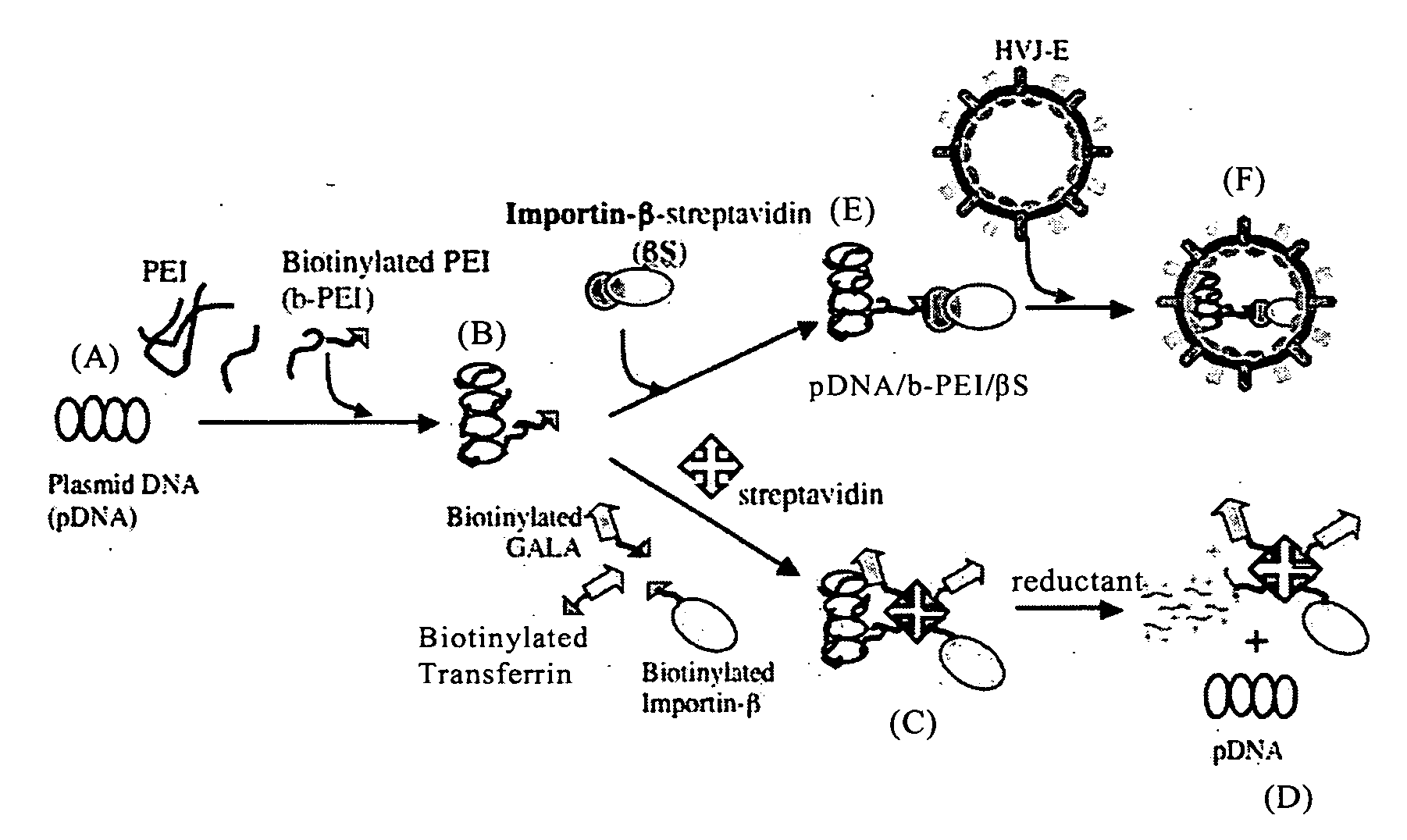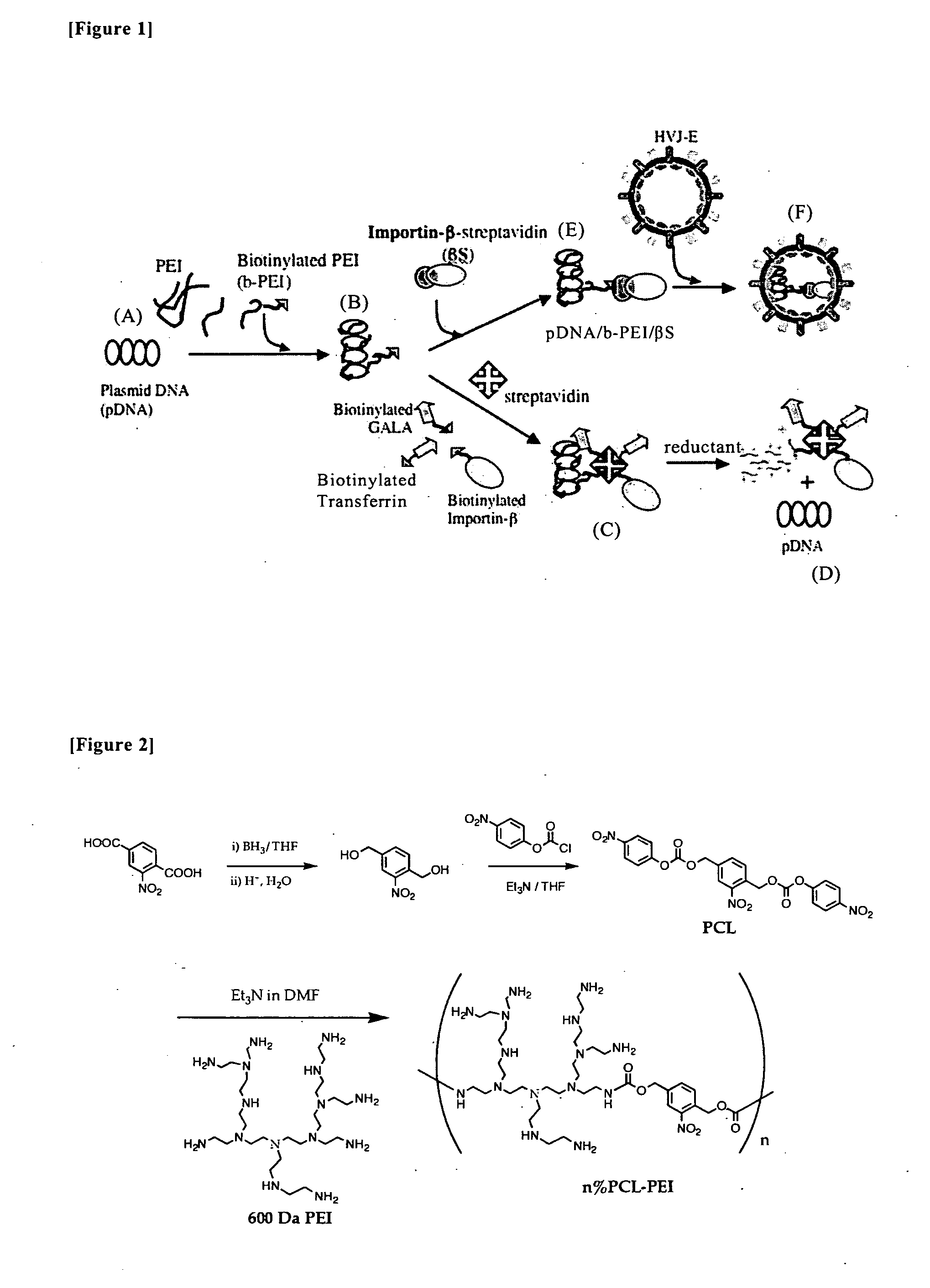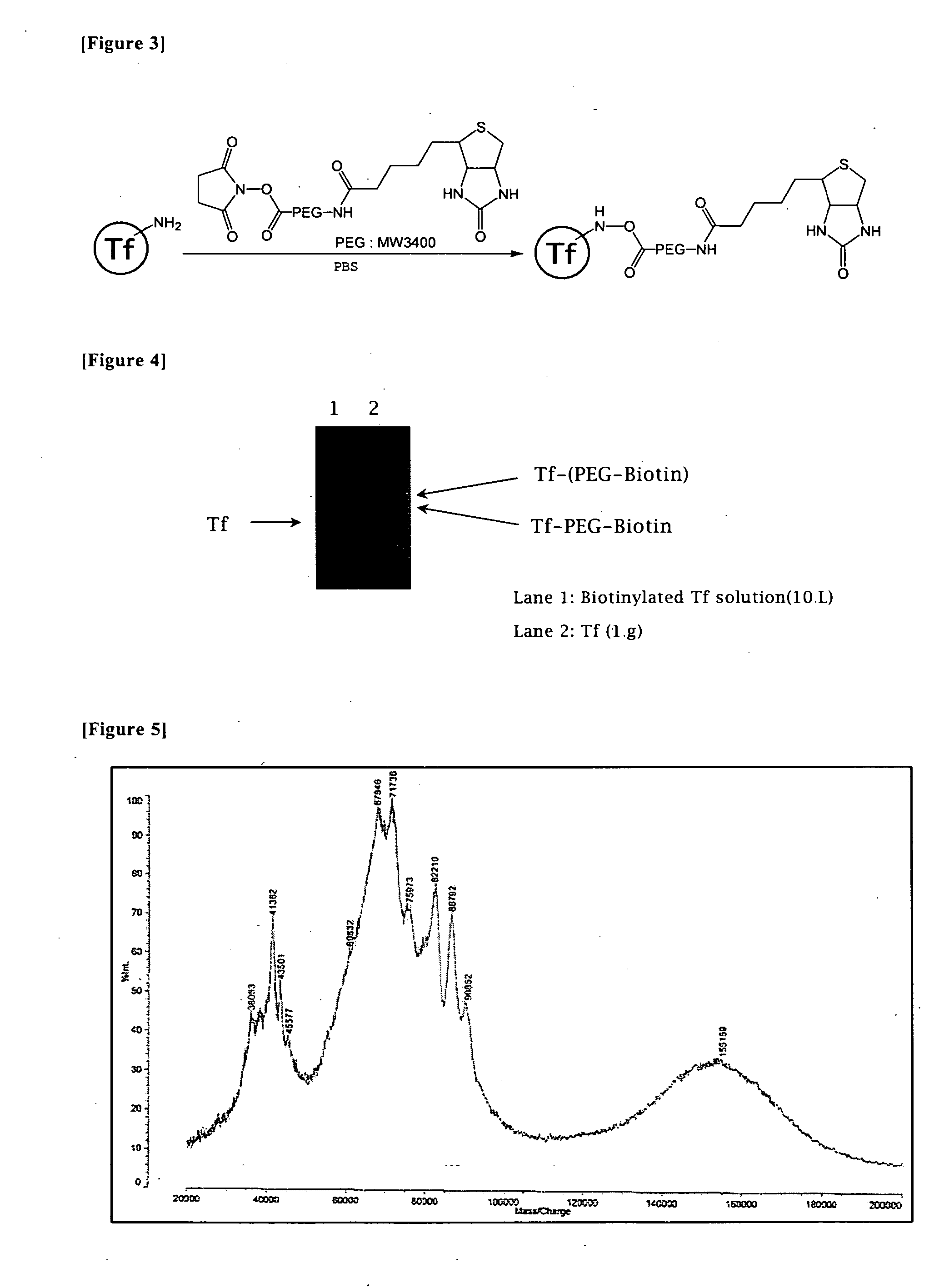Nucleic Acid Construct
a nucleic acid and construct technology, applied in the field of new nucleic acid constructs or structures, can solve the problems of low expression efficiency, undetermined methodology, and improvement of transfection efficiency, and achieve the effects of satisfactory efficiency, lowering expression efficiency, and enhancing dna releas
- Summary
- Abstract
- Description
- Claims
- Application Information
AI Technical Summary
Benefits of technology
Problems solved by technology
Method used
Image
Examples
example 1
Preparation of Biotin-Labeled Transferrin (Tf)
[0055] In accordance with the synthesis scheme as illustrated in FIG. 3, a solution of Biotin-PEG-NHS [ω-biotincarboxylate-N-hydroxysuccinate-imide ester having a PEG (polyethylene glycol) spacer, Searwater] 2.56 mg (0.67 μmol) in 50 μL DMF was added stepwise to a solution of Apo-Transferrin 50 mg (0.67 μmol) dissolved in 1 mL solution of 50 mM PBS solution (pH 7.0) at 4□ under shaking, and the resultant was further shaken for fifteen hours at 4□. The resultant solution was subjected to a centrifugation (3000×g) at 4□ with a molecular sieve filter (MW 10000), to remove impurities until it was concentrated to a volume of 900 μL. The purification of the biotinylated Tf was carried out with Soflink™ Soft Release Avidin Resin (Promega). Thus, Softlink™ Soft Release Avidin Resin 500 μL was suspended in a 5 mL solution of 50 mM PBS, followed by a centrifugation for five minutes at 4□, 1000×g.
[0056] After remoral of the supernatant, the resul...
example 2
Synthesis of Biotin-PEG Bonded GALA
[0057] By Fmoc solid phase synthesis was prepared a peptide composed of pH-responsive peptide GALA (thirty aminoacid residues: WEAALAEALAEALAEHLAEALAEALEALA4) with the N-terminus thereof being bonded with Biotin-PEG. Isolation was conducted by high performance liquid chromatography.
example 3
Construction of Expression Vector (p-GEX-2T-Biotin-Importin-β)
[0058] Peptide sequence (biotin tag), which is to be bonded to a protein expression vector Pinpoint Xa-3 (Promega), was amplified by PCR using the following primers. The primers are so designed that the biotin tag has a BamHI site at each terminus.
5′-GCCCGCGGATCCATGAAACTGAAGGTAACA-3′5′-GATATCGGTACCGGATCCCAGCTGAAGCTT-′3
[0059] The amplified biotin tag was purified by phenol-chloroform extraction and ethanol precipitation. The purified biotin tag and a protein expression vector pGEX-2T-importin-β (prepared in the manner described in non-patent reference 27) encoding a gene for GST-importin-β fusion protein were each treated with BamHI, followed by phenol-chloroform extraction and ethanol precipitation for purification. The BamHI-treated biotin tag and pGEX-2T-importin-β were admixed with each other at a molar ratio of 10:1, to insert the biotin tag into the BamHI sites of pGEX-2T-importin-β using Ligation High (Toyobo). T...
PUM
 Login to View More
Login to View More Abstract
Description
Claims
Application Information
 Login to View More
Login to View More - R&D
- Intellectual Property
- Life Sciences
- Materials
- Tech Scout
- Unparalleled Data Quality
- Higher Quality Content
- 60% Fewer Hallucinations
Browse by: Latest US Patents, China's latest patents, Technical Efficacy Thesaurus, Application Domain, Technology Topic, Popular Technical Reports.
© 2025 PatSnap. All rights reserved.Legal|Privacy policy|Modern Slavery Act Transparency Statement|Sitemap|About US| Contact US: help@patsnap.com



